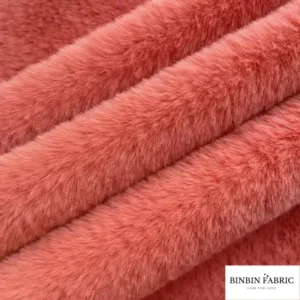Why Does Flannel Fabric Fray?
Flannel is typically made from cotton, wool, or synthetic fibers and is characterized by its loosely woven structure. The softness of the fabric comes from its brushed finish, which lifts the fibers to create a fuzzy texture. However, the loose weave and brushed surface mean that flannel is prone to fraying when cut, especially if the edges are left unfinished.
Here are the key reasons why flannel tends to fray:
1.Loose Weave: Flannel’s fibers are not tightly packed, making the edges more vulnerable to unraveling when cut. This is especially noticeable along seams or unfinished edges.
2.Brushed Surface: The brushing process that gives flannel its softness also weakens the fibers near the edges. This softness, while desirable for comfort, increases the likelihood of fraying.
3.Cotton Fibers: Flannel made from cotton, in particular, tends to fray more easily compared to synthetic fibers. Wool flannel, though heavier, can also fray if not handled carefully.
How to Prevent Flannel Fabric from Fraying
While fraying is a natural tendency for flannel, there are several methods you can use to prevent or minimize it when working with this fabric:
1.Serging or Overlocking: Using a serger or overlock machine is one of the best ways to prevent flannel from fraying. The machine stitches the edges while trimming off any excess fabric, creating a clean and durable finish.
2.Zigzag Stitch: If you don’t have a serger, a zigzag stitch on a regular sewing machine can also help secure the edges of your flannel fabric. The zigzag stitch prevents the loose fibers from unraveling and is particularly effective on medium-weight flannel.
3.Pinking Shears: Cutting flannel with pinking shears (scissors with a zigzag blade) can reduce fraying. While this method won’t completely stop fraying, it significantly reduces the amount of loose fibers along the edges.
4.Fray Check: A liquid seam sealant, such as Fray Check, can be applied to the edges of your flannel fabric. It works by bonding the fibers together, preventing them from unraveling. This is a great option for small projects or hard-to-reach areas.
5.Double-Stitching: For added durability, consider double-stitching the seams of your flannel project. This extra row of stitching provides more strength and security to prevent the edges from unraveling over time.
6.Bias Binding: If you’re working on a project where the seams will be visible, using bias binding to encase the raw edges is a stylish way to finish the fabric and prevent fraying.
How to Work with Flannel Fabric to Minimize Fraying
When working with flannel, it’s important to handle the fabric with care to minimize the risk of fraying. Here are a few tips to keep in mind:
1.Pre-Wash the Fabric: Always pre-wash flannel before cutting and sewing. Flannel tends to shrink after washing, and pre-washing helps to account for any shrinkage before you begin your project. Additionally, pre-washing softens the fabric and reduces the amount of fraying.
2.Cut with Sharp Tools: Use sharp scissors or a rotary cutter to cut flannel. Dull tools can tug at the fabric and cause more fraying along the edges.
3.Handle Edges Gently: Try to avoid excessive handling of the cut edges before you sew, as this can encourage the fibers to unravel. Sew the seams promptly to secure the edges.
Projects Where Fraying Matters
Fraying can be a significant issue in some projects, such as:
Quilts: The edges of quilt pieces are often handled multiple times during construction. Using techniques like zigzag stitching or serging can help maintain the quality of the fabric.
Garments: Clothing made from flannel, such as shirts or pajamas, undergoes frequent washing and wearing. It’s important to finish the seams properly to ensure longevity.
Blankets: While flannel blankets are known for their softness, fraying can occur along the edges. Binding or hemming the edges can prevent fraying while adding a decorative touch.
Binbin Clothing Remind
Yes, flannel fabric does fray, especially when cut, due to its loose weave and brushed surface. However, by using proper cutting, stitching, and finishing techniques, you can minimize or even prevent fraying entirely. Whether you’re making a cozy flannel shirt or a warm winter blanket, taking these extra steps will ensure your flannel projects stay beautiful and intact for years to come.


